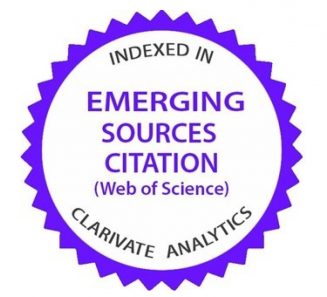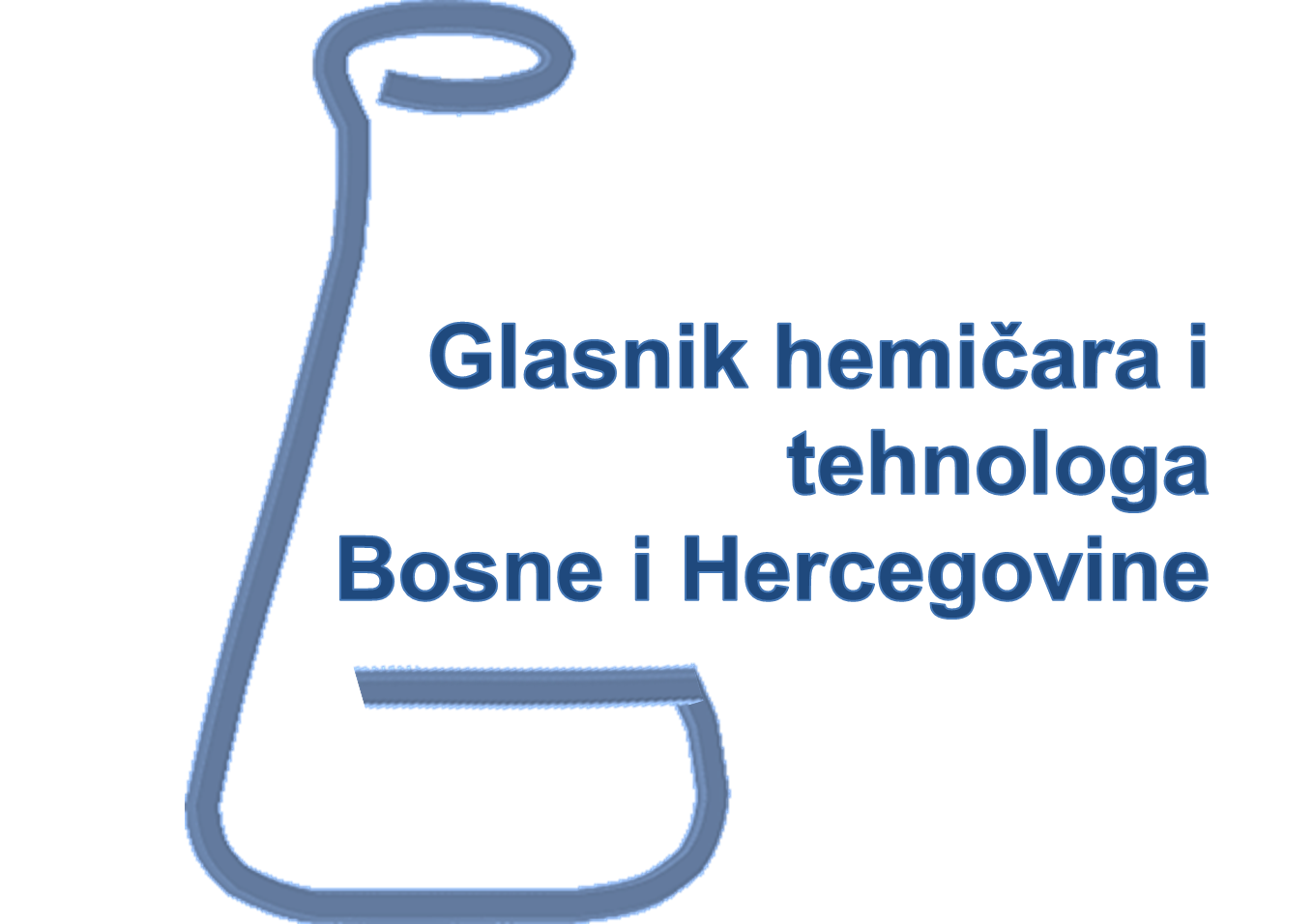|
|
Bulletin of the Chemists and Technologists of Bosnia and Herzegovina
Special Issue 2018
Publication date: October 2018 |
|
Table of contents
Selected Topics on Chemical Fingerprinting - Examples and Challenges Plenary lecture
Igor Jerković
Abstract: The research has been focused on the phytochemical fingerprinting from different natural sources (aromatic plants, honey, or marine algae), using advanced chemical methods and hyphenated techniques. Gas chromatography with mass spectrometry (GC-MS) is appropriate hyphenated technique for the research of headspace, volatile and semi-volatile compounds present in different samples that could be useful for their classification, particularly since specific or non-specific chemical markers of the botanical origin can be found and/or specific chemical fingerprints can be determined. Different classes or natural organic compounds can be found such as terpenes (particularly monoterpenes and sesquiterpenes), norizoprenoids, benzene derivatives, others. However, before the analysis it is necessary to perform adequate preparation steps such as: ultrasonic solvent extraction (USE), headspace-solid phase microextraction (HS-SPME), solid-phase extraction (SPE), supercritical CO2 extraction (SC-CO2), hydrodistillation (HD) and simultaneous hydrodistillation extraction (SDE). However, the artefacts can be generated during the extraction steps (particularly due to the influence of heat and/or water) and different methods should be used to establish the artefacts formation. To obtain reliable chemical profiles it is often necessary to use different preparative techniques since the use of only one extraction method can neglect certain group of compounds.
Bulletin of the Chemists and Technologists of Bosnia and Herzegovina Special Issues, 3.
Chemical Characterization of Atmospheric Aerosols in the Sarajevo Canton: Results of 2017-2018 Sarajevo Canton Winter Field Campaign (SAFICA) Plenary lecture
Katja Džepina
Abstract: The World Health Organization (WHO) identified air pollution as the world’s largest single environmental health risk causing seven million deaths per year, one in eight deaths globally. Of particular concern are heavily polluted and understudied urban centres: while thousands of scientific papers have been published on air quality of the cities such as London, UK and Los Angeles, USA, only 41 papers exist on the top 10 globally most polluted cities. Sarajevo, the capital of Bosnia and Herzegovina (B&H), is one of urban centres which often experiences low air quality due to the extensive use of non-renewable energy sources and geographical location. For example, in Sarajevo during 2010, an annual average concentration of particulate matter (PM) with a diameter smaller than 10 μm (PM10) was 50 μg/m3, a value 2.5x higer than the recommended WHO guidelines value of 20 μg/m3. Sarajevo Canton Winter Field Campaign 2017-2018 (SAFICA) took place in the Sarajevo Canton during the cold winter season of 2017 – 2018 (Dec 4, 2017 – Mar 15, 2018), the period historically characterized with the lowest air quality according to the available data. SAFICA project was lead by Federal hydrometeorological Institute of B&H, Institute of Public Health of the Sarajevo Canton, University of Sarajevo and University of Rijeka, and field measurements took place at three urban locations within the city of Sarajevo (Otoka, Pofalići i Bjelave) i one remote location (Ivan Sedlo mountain ridge). In this presentation, the basics of anthropogenic air pollution and its global influece on the air quality will be explained. Particular attention will be given to the atmospheric PM or aerosols, and aerosols formation mechanisms and the importance of their characteristics such as atmospheric concentration, size and chemical composition will be explained. Also, the reasons for the adverse effects of aerosols on human health and the correlation of atmospheric fine PM (PM2.5) concentrations and human mortality will be explained. Finally, preliminary results of SAFICA measurements campaign will be presented and compared with those from other global urban centers.
Bulletin of the Chemists and Technologists of Bosnia and Herzegovina Special Issues, 4.
Synthesis and Use of Photochromic Compounds as Smart Switchable Glazing for Ultraviolet Shielding Plenary lecture
Abdullah Mohamed Asiri
Abstract: Photochromism is a reversible transformation of a chemical species induced in one or both directions by absorption of electromagnetic radiation between two forms, A and B, having different absorption spectra. The Photochromic performance of some organic photochromic compounds will be studied in depth in polymer matrices. The rate constant and half-life of both coloration and bleaching will be demonstrated and the effect of organic UV absorbers doped in the polymer matrices will also be presented. The fatigue studies of the undoped and doped photochromic polymer Films will be highlighted. The prepared films demonstrate the easy and stable method of how the photochromic materials can be used in commercial applications.
Bulletin of the Chemists and Technologists of Bosnia and Herzegovina Special Issues, 5.
Discovery of Novel Enzyme Inhibitors from Nature via in vitro and in silico Methods Plenary lecture
Ilkay Erdogan Orhan
Abstract: Natural products are always important in finding new drug candidates and natural product chemistry research has been a mainstay in drug discovery and development. Enzyme inhibitors are known as one of the strongest therapy strategies against a wide range of diseases. In other words, enzyme inhibitors are one of the vital classes of drugs clinically available. In search novel enzyme inhibitors from natural sources being mostly plants, we have been screening many medicinal plants and pure natural compounds using microplate assays against a number of enzymes including cholinesterase family, elastase, collagenase, tyrosinase, xanthine oxidase, phosphodiesterase-I, carbonic anhydrase-II, lipoxygenase, HMG CoA reductase, etc. Since some of these enzymes are related to cosmetics, we have been also studying developing new formulations for anti-aging cosmetics. The active inhibitors found by our group are further investigated by in silico methods using molecular docking experiments. During these studies, we found many promising compounds such as coumarins and other polyphenolics such as flavonoids have been identified as active inhibitors through our results. In this study, examples of natural products as promising inhibitors determined by our group against different enzymes will be underlined.
Bulletin of the Chemists and Technologists of Bosnia and Herzegovina Special Issues, 6.
Asymmetric Organocatalytic Synthesis of 2-Oxindole Based Hetereocycle Precursors Plenary lecture
Cihangir Tanyeli
Abstract: Recent literature on the bioactivity of isatin (indoline-2,3-dione) derivatives triggered organic chemists to make use of the unique potential of isatin in asymmetric organocatalytic synthesis. Due to extensive presence of 2-oxindole skeleton, especially spiro-fused cycles, in many natural products, they drew the special interest in the disciplines of medicinal chemistry and agrochemistry. Due to highly reactive prochiral carbonyl group, isatins are potent precursors for the synthesis of 3,3-disubstituted spirooxindoles. Direct nucleophilic addition to isatin-derived ketimines is one of the straightforward approaches leading to α-chiral amines which are frequent subunits of pharmaceuticals and agrochemicals besides being heterocycle precursors. In this respect, asymmetric organocatalytic synthesis offers facile and environmentally benign reaction process and selectivity as well. Remarkable advantages of cooperative activation of substrates via bifunctional organocatalysts bearing H-bond donor components such as urea, thiourea and squaramide are indispensable. Modulation of sterically encumbered units such as 1-adamantyl, 2-adamantyl and t-butyl in the structure of organocatalyst reveals distinct changes in stereoselectivity of the synthetic transformations.
Bulletin of the Chemists and Technologists of Bosnia and Herzegovina Special Issues, 7.
Laser Ablation – ICPMS: A Tool for Multielement Microanalysis of Solid Samples Plenary lecture
Johannes T. van Elteren
Abstract: Clinical Chemistry is backbone in the medical treatment, diagnostics or prevention.Test for several serum enzymes are used in the differential diagnosis of disease. Laboratory attempts to improve quality aim to reduce diagnostic errors and decrease turn around time with traceability of all laboratory procedures and to assure the safety of patients. Not all the of many approaches to quality control are equally effective. A critical limitation of the statistical quality control is that they are ineffective in detecting and contoling mistakes. Statistical quality contol can effectively contol process variation, but it cannot detect or prevent most mistakes. Six sigma belongs to statistical quality control and provides a new methodology for measuring process performance and refines earlier methodologies for making process improvements.The Sigma concept provides a universal methodology for measuring quality by counting the defects results. The performance of all processes can be characterized on the „Sigma scala“ ranga from 2 to 6. Sigma was calculated using Ricos quality requirements. In terms of Sigma, if a method has a value less than three is considered to be unreliable and should not be used in routine laboratory partice. Six Sigma provides benefits over prior approaches to quality menagement, it also creates newer challengens for laboratory practitioners.
Bulletin of the Chemists and Technologists of Bosnia and Herzegovina Special Issues, 8.
Aqueous Solvation of Charged and Hydrophobic Groups: from Simple Ions to Proteins Plenary lecture
Vojko Vlachy
Abstract: Much of biology depends on proteins interacting with each other – pairwise or in aggregates – all mediated by water and ions. Understanding the aqueous solvation of electrolytes, simple and complex, is therefore important for biology, as also for industry. But today’s solvation models mostly apply to dilute solutions and, despite being supported by all-atom simulations, do not yield good results for thermodynamic properties. In recent years we applied statistical-mechanics to such systems. We used Wertheim’s integral equation and thermodynamic perturbation theories, which are well suited for systems of molecules with directional forces. Such an approach is able to treat mixture of water molecules, ions and proteins, with all the species treated on equal level of approximation. We begin the presentation with the aqueous solutions of alkali halides to show the effects of ionic sizes of salt–forming ions on osmotic properties of the solution. Next, we ask ourselves how the presence of hydrophobic groups affects the solution energetics? We conclude the presentation with discussion of the protein (globular proteins as also the monoclonal antibodies) self–association. In several examples we demonstrate, that one of the crucial parameters to understand aqueous solutions is the free energy of hydration of interacting charges.
Bulletin of the Chemists and Technologists of Bosnia and Herzegovina Special Issues, 9.
Book of Abstract - Special Issue 2018 (full version)





